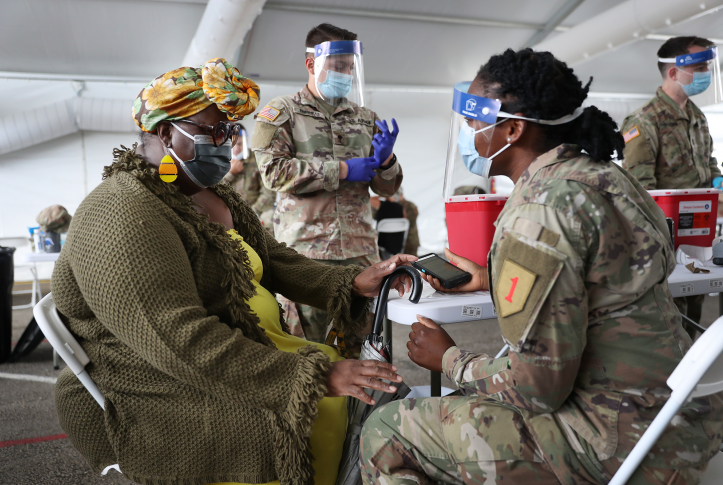On March 11, 2021, President Biden signed the American Rescue Plan Act of 2021 (ARP) (P.L. 117-2) — the latest COVID-19 relief package and first one enacted by the current administration. Committing nearly $1.9 trillion, the law provides relief to American families that have lost jobs or lack affordable health insurance coverage during the pandemic. It also provides significant funding for states’ pandemic response efforts — something missing from previous relief measures — and for Medicaid programs.
State Support for COVID-19 Response Efforts
Targeted funding for states will support efforts to enhance vaccine distribution, testing, public health workforce, and nursing home infection control, as well as to mitigate state budget shortfalls. Specific provisions include:
- Vaccines. The package provides $7.5 billion to the Centers for Disease Control and Prevention (CDC) to plan, promote, distribute, administer, and track COVID-19 vaccines. This includes technical assistance, guidance, support, and grants to states to enhance their COVID-19 vaccine distribution and administration capabilities. As with previous supplemental funding, the CDC is likely to distribute this latest allocation through the existing Cooperative Agreement for Emergency Response: Public Health Response. (State allotments to date are available here.)
- Testing. The package also provides $47.8 billion to the U.S. Department of Health and Human Services (HHS) to support implementation of a national COVID-19 testing and contact-tracing strategy. This includes technical assistance, guidance, and grants from the CDC to states for testing, contact tracing, and improving data-sharing capabilities. In addition, the legislation directs $1.75 billion to the CDC to support states’ efforts related to genomic sequencing and surveillance of emerging variants of COVID-19.
- Workforce. HHS will receive an additional $7.66 billion for grants to states to establish, expand, and sustain a public health workforce. The awards can be used to fund positions such as contact tracers, social support specialists, community health workers, public health nurses, disease intervention specialists, and epidemiologists, among others. The funding also supports personal protective equipment, data management, and administrative costs.
- Nursing homes. Given the disproportionate toll of COVID-19 on nursing home residents and workers, the package allocates $500 million to HHS to distribute to states for the establishment of “strike teams” (i.e., groups of public health, infection control, and emergency response personnel) to respond to COVID-19 outbreaks in skilled nursing facilities and other institutions.
- Costs. States will receive $195.3 billion and localities will receive $130.2 billion in direct aid to cover costs associated with the pandemic, including emergency response costs and revenue lost as a result of the pandemic.
Additional Funding for State Medicaid Programs
Medicaid programs cover a high proportion of populations vulnerable to COVID-19, including communities of color and individuals with low incomes. States will benefit from enhanced Medicaid funding to manage the challenge of increased enrollment in the face of constrained resources without the ability to run a deficit (i.e., states must balance their budgets every year).
The Medicaid provisions include resources for programs to fully cover COVID-19 vaccines and treatment with no cost sharing to beneficiaries. Other provisions offer additional federal medical assistance percentage (FMAP) increases to states opting to add or enhance Medicaid benefits at a time when increased access to and coverage of care are paramount. The higher federal matching rate for state spending on these health care services will increase the total dollars available to deliver critically important care.
What’s Ahead
It will be important for states to receive these funds promptly in light of the expected increase in demand for COVID-19 vaccines, especially following the announcement that all adult Americans are expected to be eligible by May 1.
As the nation moves forward on the largest mass-vaccination campaign in our history, it will be critical to monitor and assess ongoing state infrastructure, data, and public health workforce capacity to meet the needs of the American public, and to allocate additional resources appropriately. States will continue to play a central role in combating the pandemic and will require lasting support to do so.







